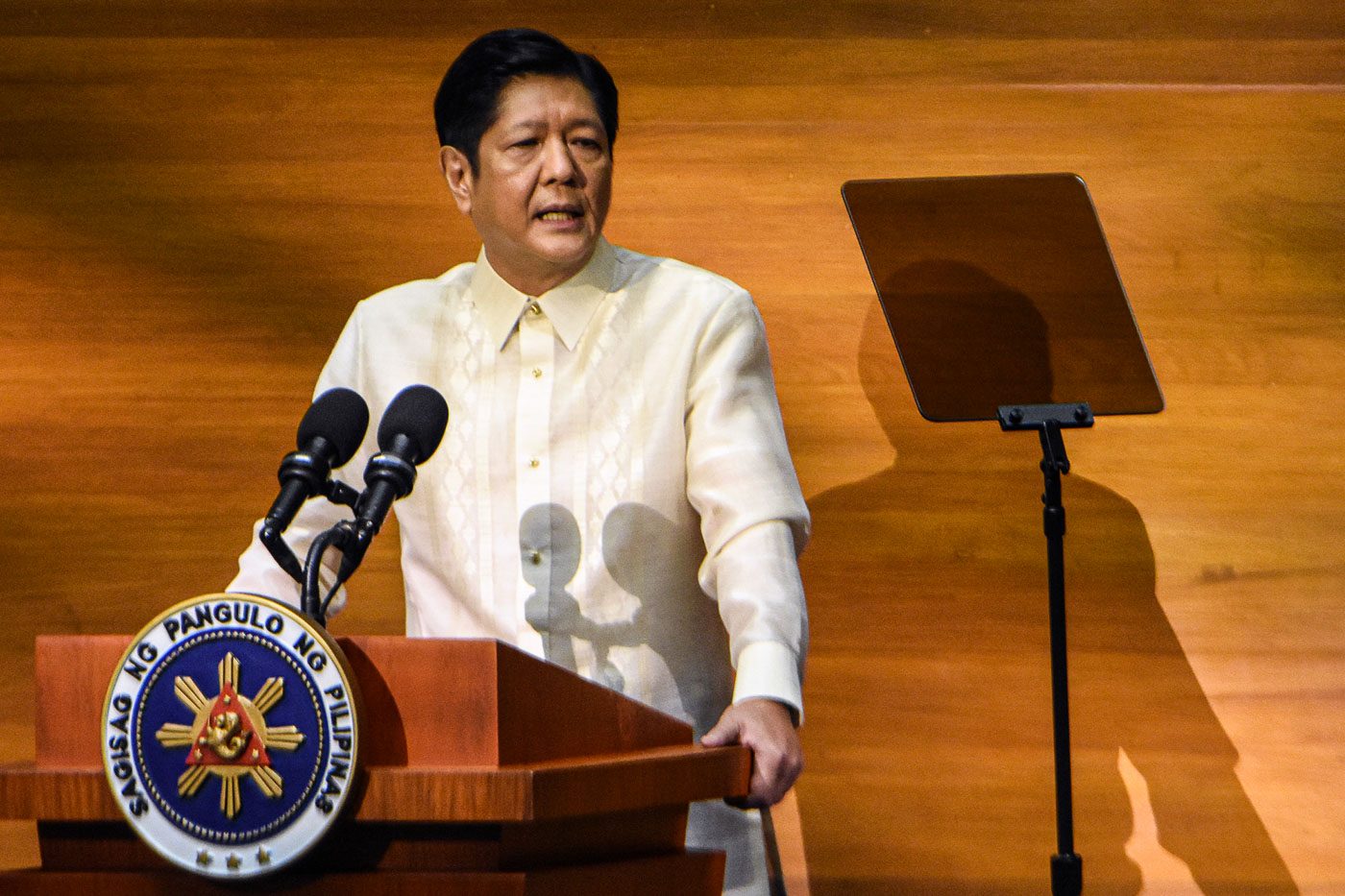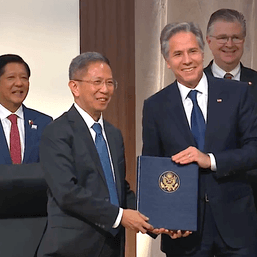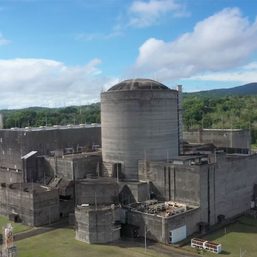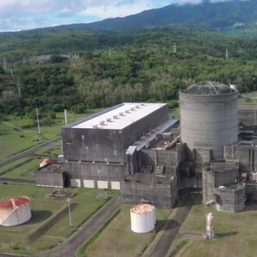SUMMARY
This is AI generated summarization, which may have errors. For context, always refer to the full article.

MANILA, Philippines – President Ferdinand Marcos Jr. is eyeing nuclear energy and renewable technology to address the Philippines’ energy crisis.
“We must build new power plants. We must take advantage of all the best technology that is now available, especially in the areas of renewable energy,” Marcos said in his first State of the Nation Address (SONA) on Monday, July 25.
Data from the Department of Energy (DOE) showed that the Philippines is powered mostly by coal (47%), while natural gas comprises 22% and renewables (hydro, geothermal, wind, and solar) make up 24%. The remaining 6.2% are from oil-based sources.
Marcos reiterated his agenda to push for more renewable energy sources to improve the country’s energy mix.
“I believe that it is time also to reexamine our strategy towards building nuclear power plants in the Philippines,” the President said.
The pros
Here are some of the advantages of having a nuclear power plant:
More efficient. According to experts, 6 grams of nuclear fuel will yield the same amount of energy as 1 metric ton of coal.
No direct emissions. In the United States, nuclear is the largest source of clean power. The US DOE said it generated nearly 800 billion kilowatt hours of electricity and produced half of the country’s carbon-free electricity in 2021. Some 470 million metric tons of carbon emissions were avoided in 2020, which is equivalent to removing 100 million cars off the road.
It is important to note, however, that nuclear power plants still contribute to climate change because mining and refining uranium emit carbon dioxide. Fossil fuels could also have been used in building the plants.
Smaller land area. The US DOE said “nuclear energy produces more electricity on less land than any other clean-air source.”

The cons
Marcos did not explicitly mention the P110-billion Bataan Nuclear Power Plant (BNPP) project under his father, the late dictator Ferdinand Marcos.
But as the younger Marcos revives the Philippines’ plans to pursue nuclear energy, the controversies of his late father’s dreams are likely to be revisited.
Here are some of the issues in getting the BNPP up and running:
The cost. The mothballed power plant costs the Philippines P40 million to P50 million per year to maintain, even though it is not operating, according to a report by Vera Files.
In 2017, the DOE consulted experts from Korea and Russia to conduct a pre-feasibility study to rehabilitate the BNPP. Korean experts said it would cost $1 billion or P55.8 billion, while Russian experts said it would cost $2 billion to $3 billion and take up to four years to rehabilitate.
Nuclear waste. Filipino scientist Fabian Dayrit warned that nuclear power has a maximum life span of 40 years. Decommissioning and maintaining nuclear waste “might be expensive.”
The US allocates some $44 billion for its nuclear waste disposal facility, while Japan spends $123 billion for safety measures and decommissioning.
Potential damages. The Institute for Energy Economics and Financial Analysis (IEEFA) warned there could be staggering environmental damages in event of disasters.
“Unless the Philippines can invest in expensive best-in-class safety and storage facilities, accidents resulting from typhoons or volcanic activity could leave Filipino taxpayers – not the US or private companies – on the hook for trillions of pesos in environmental damages,” IEEFA said.
In his SONA, Marcos said the possible construction of a nuclear power plant would be based on international standards.
“We will comply of course with the International Atomic Energy Agency regulations for nuclear power plants as they have been strengthened after Fukushima. In the area of nuclear power, there have been new technologies developed that allow smaller scale modular nuclear plants and other derivations thereof,” he said.
The President added that public-private partnerships would “play a part in support as funding in this period is limited.”
Other hazards. Scientist Kelvin Rodolfo wrote that the BNPP “sits on the western coast of Natib, a dormant volcano so massive that many people who frequently travel on its roads don’t even realize it is a volcano.” While Natib is dormant, Rodolfo cautioned that “a future eruption could break out.”
The late former president Corazon Aquino had set aside the nuclear power plant following the Chernobyl disaster in 1986. – research by Lance Spencer Yu/Rappler.com
Lance Spencer Yu is a Rappler intern. He is studying BS Management of Financial Institutions at the De La Salle University.
Add a comment
How does this make you feel?
![[OPINION] The long-term future of nuclear wastes](https://www.rappler.com/tachyon/2022/03/greenpeace-no-nuke-protest-doe-march-11-2022-001.jpg?fit=449%2C449)

![[OPINION] Who decides whether Bataan should go nuclear?](https://www.rappler.com/tachyon/2023/08/imho-bataan-nuclear-powerplant.jpg?resize=257%2C257&crop=271px%2C0px%2C720px%2C720px)


![[OPINION] Nuclear energy should not become major part of Philippine energy system](https://www.rappler.com/tachyon/2023/01/nuclear-energy-january-26-2023.jpg?resize=257%2C257&crop=205px%2C0px%2C900px%2C900px)



![[ANALYSIS] Why do we pay higher power rates when we have power outages?](https://www.rappler.com/tachyon/2024/07/tl-higher-power-rates-higher-power-outages.jpg?resize=257%2C257&crop=401px%2C0px%2C1080px%2C1080px)

![[In This Economy] Marcos’ POGO ban is popular, but will it work?](https://www.rappler.com/tachyon/2024/07/thought-leaders-marcos-pogo-ban.jpg?resize=257%2C257&crop=255px%2C0px%2C720px%2C720px)
![[Rappler Investigates] POGOs no-go as Typhoon Carina exits](https://www.rappler.com/tachyon/2024/07/newsletter-graphics-carina-pogo.jpg?resize=257%2C257&crop=424px%2C0px%2C1080px%2C1080px)







There are no comments yet. Add your comment to start the conversation.